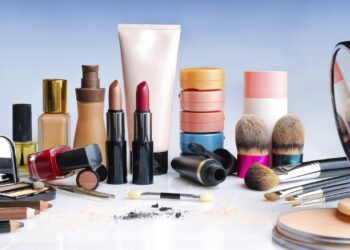Misinformation about sunscreen and sun exposure is surprisingly common in young adults, which dermatologists say can have serious consequences. A new national survey by the Orlando Health Cancer Institute that included 1,021 U.S. adults found that about 1 in 7 (or 14%) adults under 35 think daily sunscreen use is more harmful to the skin than direct sun exposure, and nearly a quarter (23%) of young adults believe that drinking water and staying hydrated prevents a sunburn. The survey, conducted by Ipso, also found that nearly a third (32%) of Americans believe that a tan makes people look “better and healthier.”
So what’s the real deal? Yahoo Life reached out to dermatologists to clear up the confusion and debunk some myths about sun safety. Here’s what you need to know.
Why is there so much misinformation about sunscreen and sun exposure?
Experts say that much of the misinformation stems from social media. “Even if information is false and without scientific legitimacy, people may take it at face value if it’s widely circulated on social media and through word of mouth among friends and acquaintances,” Dr. Vicky Zhen Ren, assistant professor of dermatology at Baylor College of Medicine, tells Yahoo Life.
But it can also come from celebrities. Earlier this year, Kristin Cavallari shared that she doesn’t use sunscreen on her Let’s Be Real podcast, which featured her doctor, Ryan Monahan, who specializes in functional and Eastern medicine. Monahan claimed that people can build up a tolerance to the sun “instead of burning.” The controversial clip recently started circulating again on social media, including TikTok. Another case in point: In a 2017 interview with ESPN, Tom Brady claimed that his daily habit of drinking 20 ounces of purified water in the morning is the reason why he doesn’t get sunburned anymore.
“People may think, ‘Oh this is a great thing to do,’” Dr. Jason Miller, medical director of Schweiger Dermatology Group, tells Yahoo Life. “There is zero evidence to show that drinking water prevents you from getting sunburn. But once that information is out there, if people want to believe it they believe it.”
Is sunscreen safe?
Sunscreens are regulated by the Food and Drug Administration (FDA) and are “held to high standards to ensure people’s safety,” says Ren. “There is no scientific evidence that the sunscreen ingredients currently available in the U.S. are harmful to human health. Along with protective clothing — such as broad-brimmed hats, sunglasses, long-sleeved shirts and pants — broad-spectrum SPF 30+ water-resistant sunscreens are recommended for sun protection and can be used in people as young as 6 months old.”
Ren adds that, for those concerned about skin irritation, physical sunscreens containing zinc oxide or titanium dioxide, which block the sun’s ultraviolet (UV) rays like a shield, are better choices than chemical sunscreens, which absorb UV rays like a sponge.
“We know that 1 in 5 people are going to get skin cancer in their lifetime,” says Miller. “Data shows that sunscreen prevents cancer.” According to the Skin Cancer Foundation, regularly slathering on an SPF 15 or higher broad-spectrum sunscreen lowers your chances of developing squamous cell carcinoma by about 40% and melanoma by 50%, as well as premature skin aging by 24%.
Miller adds: “Sunscreen is safe.” UV exposure, on the other hand — whether that’s from the sun or indoor tanning — is “the biggest and most preventable risk factor for skin cancer,” says Ren. She explains that it’s not only chronic, cumulative sun exposure that’s harmful, but also intermittent and intense sun exposure, such as with indoor tanning. “Research shows it only takes one blistering sunburn during childhood or adolescence to nearly double a person’s risk of developing melanoma, and every time you tan, you damage your skin,” says Ren. “This damage is cumulative and results in premature skin aging and skin cancer.”
Can you still get enough vitamin D if you use sunscreen?
When skin is exposed to sunlight, it produces vitamin D, which helps build and maintain bones and supports immune health. But you don’t have to give up sunscreen to get the key nutrient. “There are bodies of evidence showing sunscreen does not lead to lower vitamin D levels,” says Miller. “People in general don’t put enough sunscreen on, and there’s not 100% blockage of UV rays with sunscreen, so there’s enough getting through.”
Ren also notes that you don’t need to rely on outdoor or indoor tanning to get in vitamin D, pointing out that the American Academy of Dermatology recommends eating vitamin D-rich foods, such as salmon, mackerel, tuna and eggs, or vitamin D-fortified foods or beverages, such as orange juice. You can also talk to your health care provider about taking vitamin D2 or D3 supplements. The average daily recommended amount for adults 19 to 70 years old is 600 IUs, according to the National Institutes of Health.
Can drinking water help prevent sunburns?
While it’s important to make sure you’re hydrated, water can’t replace sunscreen, experts say. “Staying hydrated helps prevent dehydration after a sunburn occurs, but hydration does not protect the skin from UV damage,” says Ren.
Both Ren and Miller say it can be harder for some people, particularly young adults, to understand how damaging tanning, skipping sunscreen and getting sunburns can be since the consequences aren’t always immediate. “Every day I have both young adult and older adult patients tell me they’re good about using sunscreen now, but wish they’d been more diligent with sun protection when they were younger,” says Ren. “Over the years, with cumulative sun damage, people not only develop skin cancer, but also increase their risk of early skin aging” — specifically, wrinkles, lentigines (aka liver or age spots), loss of skin elasticity and dyspigmentation, such as melasma.
“You want to make sure you’re using sunscreen before you see those changes,” says Miller. “It’s easier to prevent them than treat them.”















































